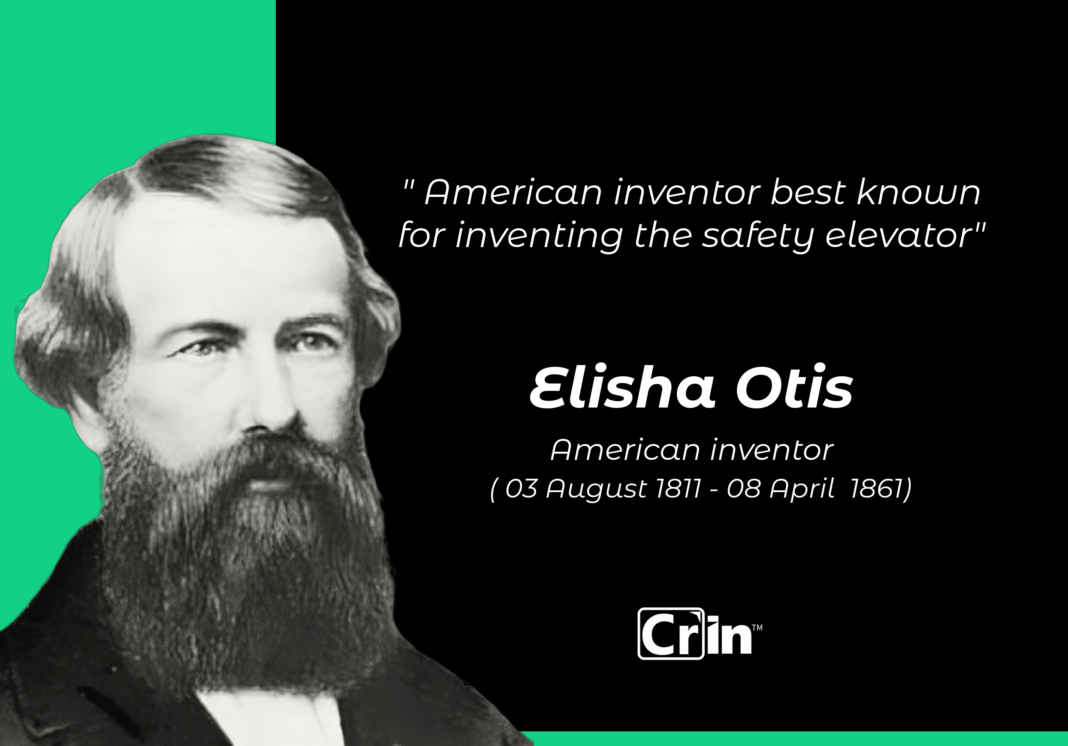Brief Description :-
Elisha Otis, the American inventor most famous for his contribution to vertical transportation, wasn’t actually the one who invented the elevator itself. Elevators, in some form, existed before Otis. However, Otis’s ingenious invention in 1853 transformed the elevator from a dangerous freight platform into a safe and practical way for people to travel between floors.
Otis’s key contribution was the automatic safety brake. This device ensured that even if the hoisting cable snapped, the elevator wouldn’t plummet. The invention famously included a dramatic public demonstration at the Crystal Palace Exposition in New York. With a crowd watching in nervous anticipation, Otis rode in the elevator and had the cable deliberately cut. The safety brake kicked in, stopping the elevator safely, and shouts of amazement turned into applause. This public display of safety was a turning point, convincing people that elevators were no longer deathtraps.
Otis’s invention paved the way for the construction of skyscrapers. With safe elevators, buildings could now reach new heights, fundamentally changing cityscapes and transforming how we live and work. He also founded the Otis Elevator Company, which continues to be a major player in the elevator industry today.
While the safety brake was his most famous invention, Otis was a prolific tinkerer throughout his life. He also designed improvements for bedstead manufacturing, railway brakes, and even dabbled in agricultural equipment. Though not all his inventions were commercially successful, they all showcased his innovative spirit.
Elisha Otis’s legacy goes beyond elevators. He is credited with helping usher in the modern metropolis and with demonstrating the importance of safety innovation. His story is one of perseverance, ingenuity, and a willingness to take a calculated risk – a risk that quite literally changed the landscape of our world.
For detailed information, kindly visit Elisha Otis on Wikipedia



